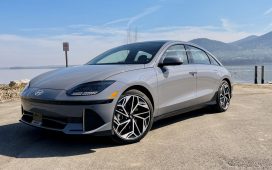When the Cybertruck was announced in November 2019, Tesla CEO Elon Musk said he expected production to start in late 2021. But leaked Tesla documents examined by Wired suggest that the company was still struggling with the performance of basic elements of a preproduction “alpha” version of the truck in January 2022 including its braking, body sealing, and suspension.
Over a million customers are thought to have put down a $100 deposit to reserve the Cybertruck since its infamous 2019 unveiling, during which Musk smashed two of its windows with metal balls in a failed demonstration of its durability. Although it’s unlikely to be Tesla’s best-selling vehicle, the Cybertruck’s eventual release will be seen as a symbolic victory for a company that has not shipped a new consumer model since 2020’s Model Y.
Tesla’s first new consumer vehicle since 2020’s Model Y
Yet the documents, which came from the same leak reported on by German newspaper Handelsblatt, suggest development of the Cybertruck has been far from smooth. The prototype version of the truck tested in January 2022 had problems with braking, for example, characterized by “excessive pedal travel and inconsistent stop,” “excessive pitch during friction braking,” and issues with braking while turning.
Sealing the vehicle appears to have been another challenge, which is an important element for keeping both weather and noise out of the cabin. “There are a number of areas that we do not have a clear path to sealing,” the documents reportedly says. The prototype vehicle also had issues with its suspension, with the report noting a “significant gap to targets” in some areas of performance, according to Wired.
The fact that development of the Cybertruck has been challenging won’t come as a surprise to anyone who’s been following its development. The truck has an incredibly polarizing design that’s led to intense scrutiny around normally simple elements like windshield wipers. Its angular body is also made of stainless steel, which the New York Times notes is more expensive and heavier than the steel typically used in car manufacturer, and is “expensive and difficult to shape and weld.”












